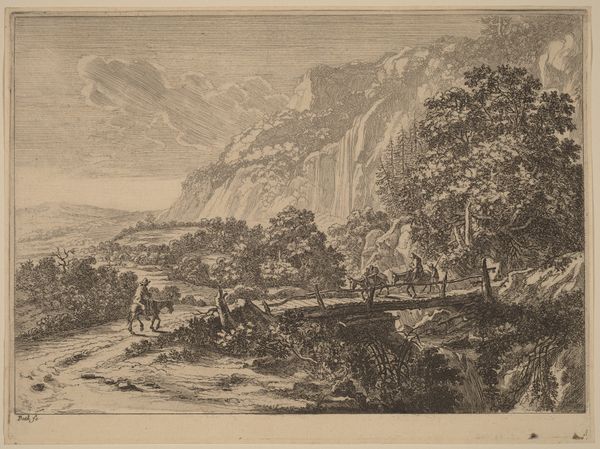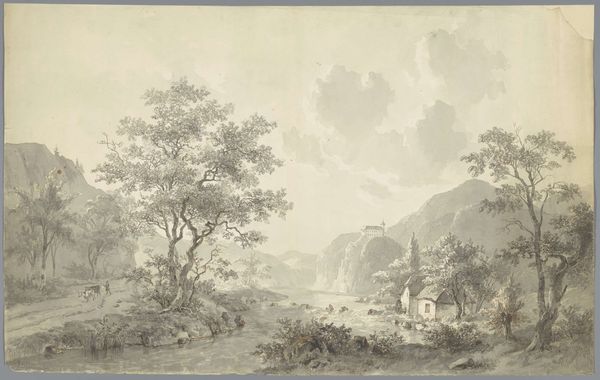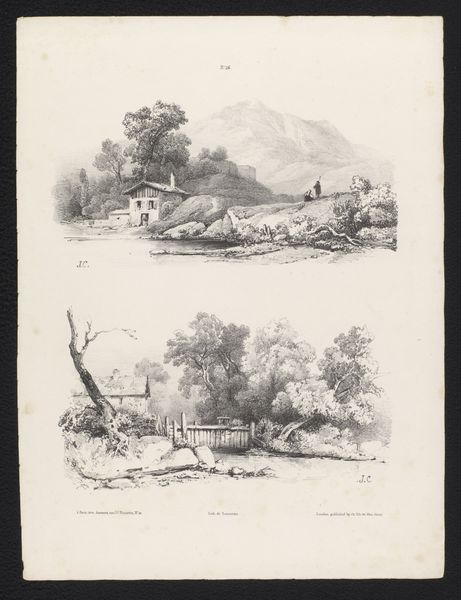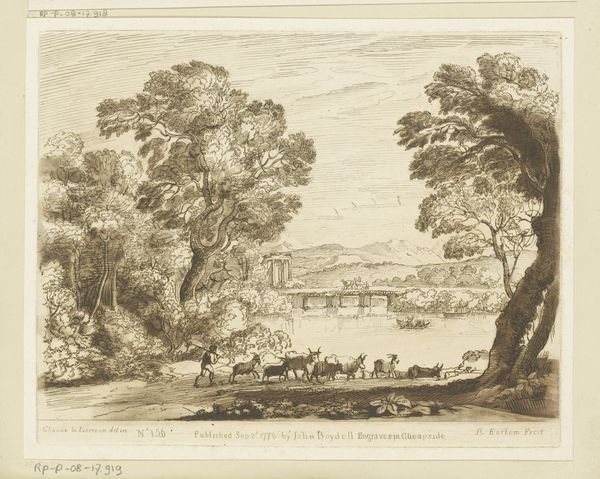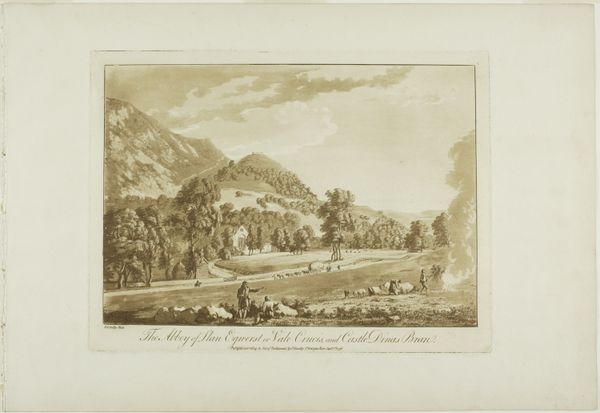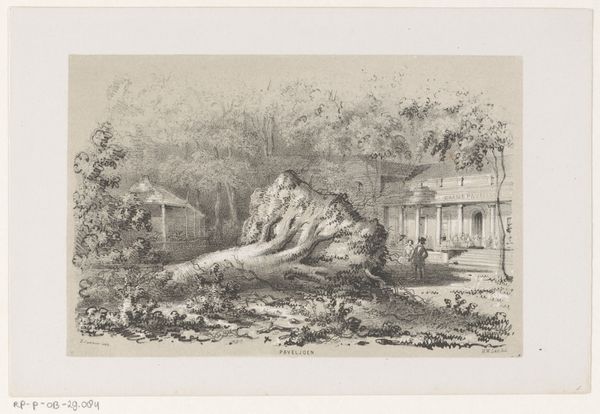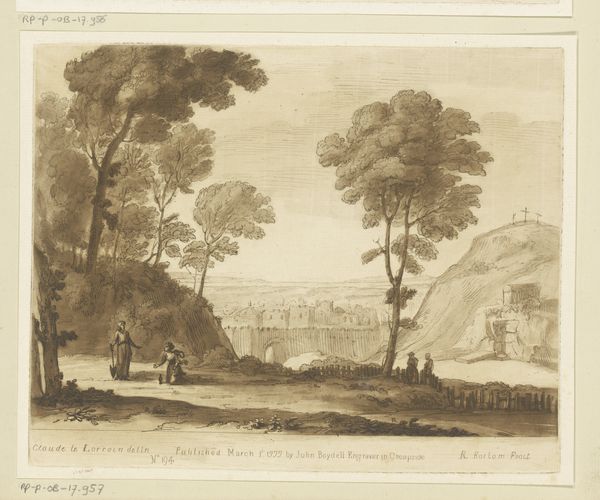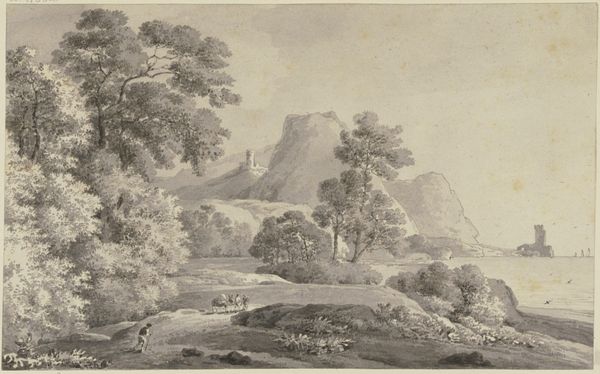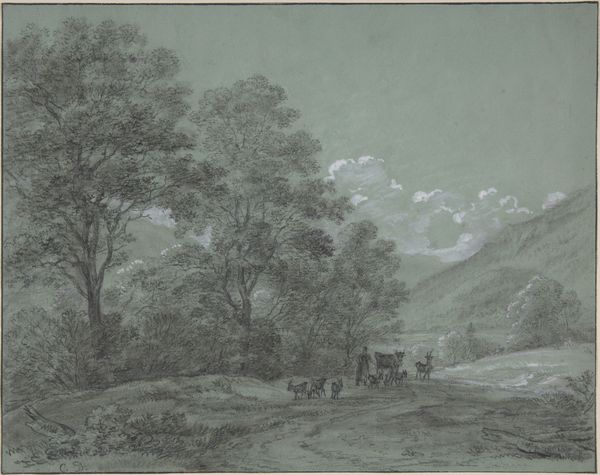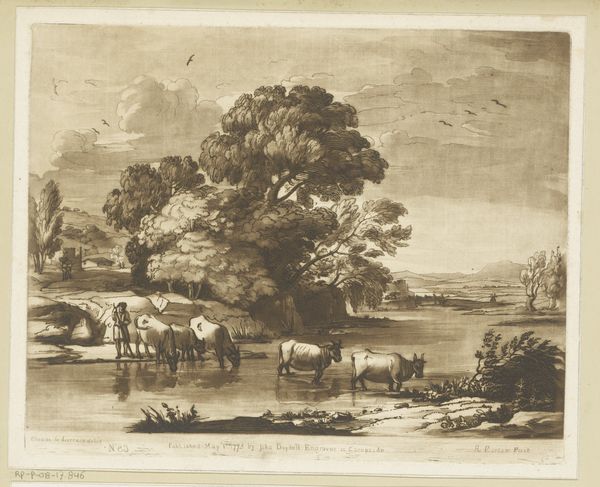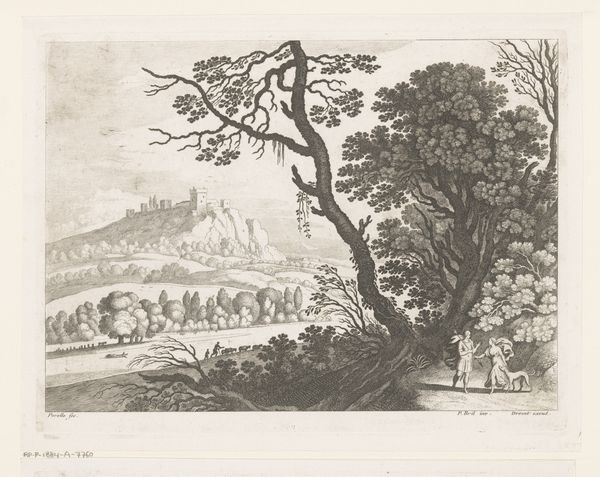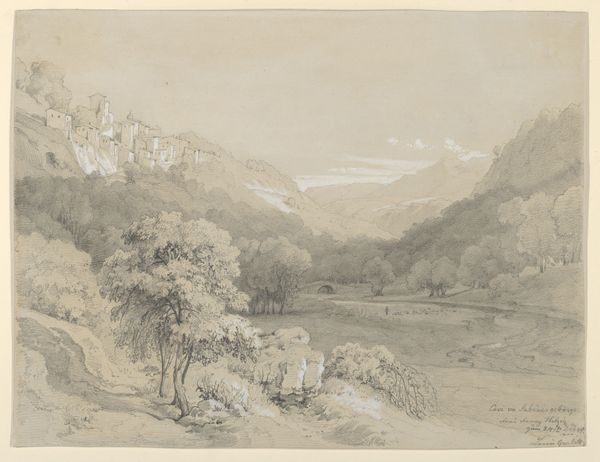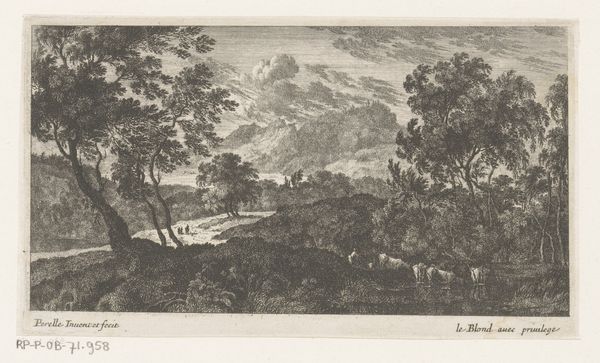
drawing, lithograph, print, paper
#
drawing
#
lithograph
# print
#
landscape
#
figuration
#
paper
#
romanticism
Dimensions: 293 × 423 mm (image); 369 × 541 mm (sheet)
Copyright: Public Domain
Curator: The Art Institute of Chicago holds this lovely 1841 lithograph by James Duffield Harding titled "Ash and Oak, from The Park and the Forest". Editor: My immediate reaction is… idyllic. A very classic, romantic sensibility. It feels staged almost, a perfect little diorama of country life. Curator: It’s interesting that you say “staged.” The picturesque aesthetic that became popular in the late 18th and early 19th centuries was often exactly that: nature reimagined and curated to fit certain idealized forms. Think of landscape gardens and carefully framed views. Editor: Right, almost like creating a series of "perfect" moments within the landscape, and Harding captures this feeling wonderfully. I’m looking at the large tree dominating the composition. It feels so intentionally placed, like the focal point of an emotional experience. What do the ash and oak trees symbolize here? Curator: Ash is traditionally linked with protection and oak with endurance, the combination representing the strength and security provided by the natural world, echoing ideas about the restorative properties of nature—think Wordsworth. Romanticism as a literary and artistic movement absolutely saturates it. Editor: Yes! There’s that human need again, the grasping at archetypes of strength. And looking at the little figures driving cattle by the creek, there's that juxtaposition between monumental nature and humans living humbly alongside it. A constant theme during this time. Curator: Definitely a core tension. And Harding has distributed tonal weights so cleverly in the composition, moving our gaze from the strong highlights on the trees to the shadowed dwellings to the muted forms of mountains, guiding our interpretation from nature as spectacle to nature as refuge. Editor: A very astute point, how our reading changes as our eyes progress across this crafted scene. I suppose that speaks volumes about why it's continued to appeal across the centuries! Curator: Precisely. Visual symbols really condense the complexity of human hopes, desires, and longings. Editor: Well, I’m ready to go sit under an ash tree now and contemplate it all. Thanks for guiding us today!
Comments
No comments
Be the first to comment and join the conversation on the ultimate creative platform.

